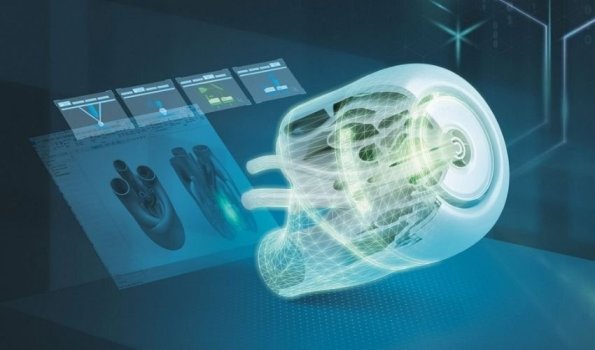K
Kathleen Martin
Guest
For many companies, digitization and automation are the keys to the further development of additive manufacturing. Thus, more and more manufacturers are relying on cloud-based solutions and integrating various algorithms into their 3D printing solutions in order to exploit the full potential of the technology. As a digital process itself, 3D printing is part of Industry 4.0 and thus an important component of an era in which artificial intelligence, such as machine learning, is increasingly being used to optimize the value chain. Artificial intelligence (AI) is able to process a large amount of complex data in a very short time, which is why it is becoming increasingly important as a decision maker. We explain what machine learning is and why this form of AI is helping to shape the future of additive manufacturing.
Machine Learning is a subcategory of AI and is defined as a system or software that uses algorithms to examine data and subsequently recognize patterns or determine solutions. Contrary to a widespread belief that machine learning is a newfangled phenomenon, it can be said that its beginnings date back to the 1940s, when the first researchers started to recreate the neurons of the brain with electrical circuits. In 1957, the Mark I Perceptron was the first major success in this field: the machine was able to classify input data independently. In doing so, the device learned from mistakes made in previous attempts, which improved the classification over time. Since then, the foundation was laid and researchers became fascinated by the possibilities and potential of the technology. In the meantime, we encounter artificial intelligence every day in all areas of life. From speech recognition to intelligent chatbots to personalized treatment plans, Machine Learning is being used in a variety of applications.
Supervised vs. Unsupervised Machine Learning
Within the machine learning spectrum, it is important to distinguish between different methods and models. Not all machine learning is the same. For example, a distinction must be made between supervised and unsupervised machine learning. Supervised Machine Learning requires that categorized data (input data) and the target variable (output data) are available. From these, the model is derived, which then examines (new) uncategorized data and determines the target variable for these itself. This form of machine learning is used, for example, for predictions, e.g.: for forecasting maintenance intervals.
Continue reading: https://www.3dnatives.com/en/machine-learning-artificial-intelligence-additive-manufacturing-271220214/#!
Machine Learning is a subcategory of AI and is defined as a system or software that uses algorithms to examine data and subsequently recognize patterns or determine solutions. Contrary to a widespread belief that machine learning is a newfangled phenomenon, it can be said that its beginnings date back to the 1940s, when the first researchers started to recreate the neurons of the brain with electrical circuits. In 1957, the Mark I Perceptron was the first major success in this field: the machine was able to classify input data independently. In doing so, the device learned from mistakes made in previous attempts, which improved the classification over time. Since then, the foundation was laid and researchers became fascinated by the possibilities and potential of the technology. In the meantime, we encounter artificial intelligence every day in all areas of life. From speech recognition to intelligent chatbots to personalized treatment plans, Machine Learning is being used in a variety of applications.
Supervised vs. Unsupervised Machine Learning
Within the machine learning spectrum, it is important to distinguish between different methods and models. Not all machine learning is the same. For example, a distinction must be made between supervised and unsupervised machine learning. Supervised Machine Learning requires that categorized data (input data) and the target variable (output data) are available. From these, the model is derived, which then examines (new) uncategorized data and determines the target variable for these itself. This form of machine learning is used, for example, for predictions, e.g.: for forecasting maintenance intervals.
Continue reading: https://www.3dnatives.com/en/machine-learning-artificial-intelligence-additive-manufacturing-271220214/#!

